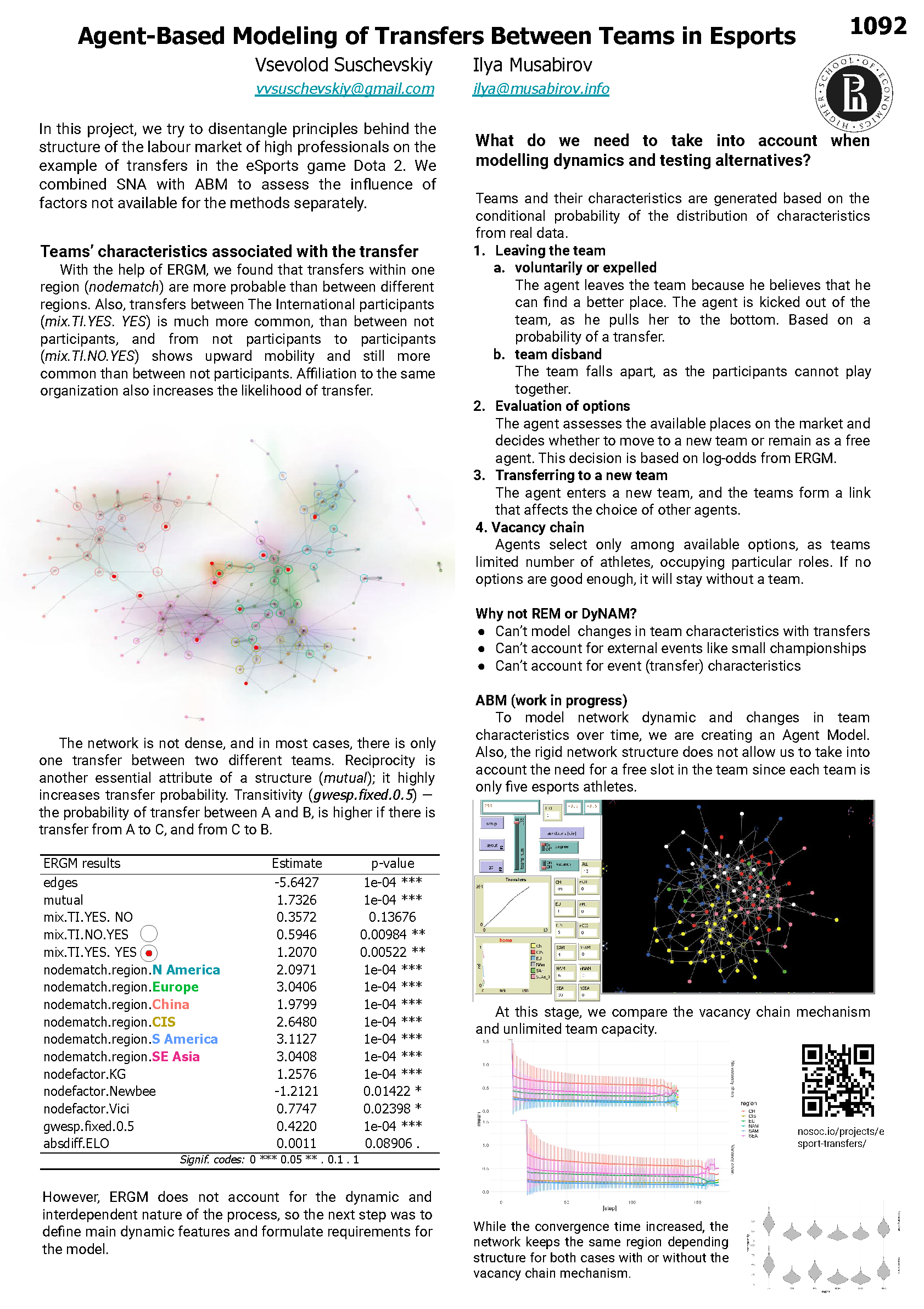
Agent-Based Modeling of Transfers Between Teams in Esports
Vsevolod Suschevskiy, Ilya Musabirov
In this study, we attempt to combine agent-based and social network analysis with building a model of athlete transfers between professional teams in Dota 2.
Dota 2 is a game and esports discipline, where two teams of five esports athletes play against each other. As an esports discipline, it attracts more than 100 teams from 6 world regions to compete in different tournaments, including The International (TI) tournament, with a prize pool of $25 million and peek viewership near 15 million. This growing attention, tend to the emergence of esports as a global market and a career path for individuals worldwide, and extensive coverage in specialized social media and resources make it a rich source of data for social scientists.
We start from estimating and an ERGM model, which allows exploring the interaction of main parameters such as reciprocity and transitivity, homophily by region, a participation of the source or target team in TI, in the global network and its regional segments.
However, (1) the dynamic nature of the network, (2) the existence of two types of interacting agents, players and teams, with teams consisting only of five players and, thus, potentially changing their properties with each transfer, (3) small size of the network core, with close ceiling of the number of potential numbers of sources on each turn, leading to chain transfers, all make applying traditional models of network dynamics complicated.
Thus, in the poster, we discuss the design and the first results of the attempt to build a network-aware agent-based model of the global esports transfer market. 
← Schedule

